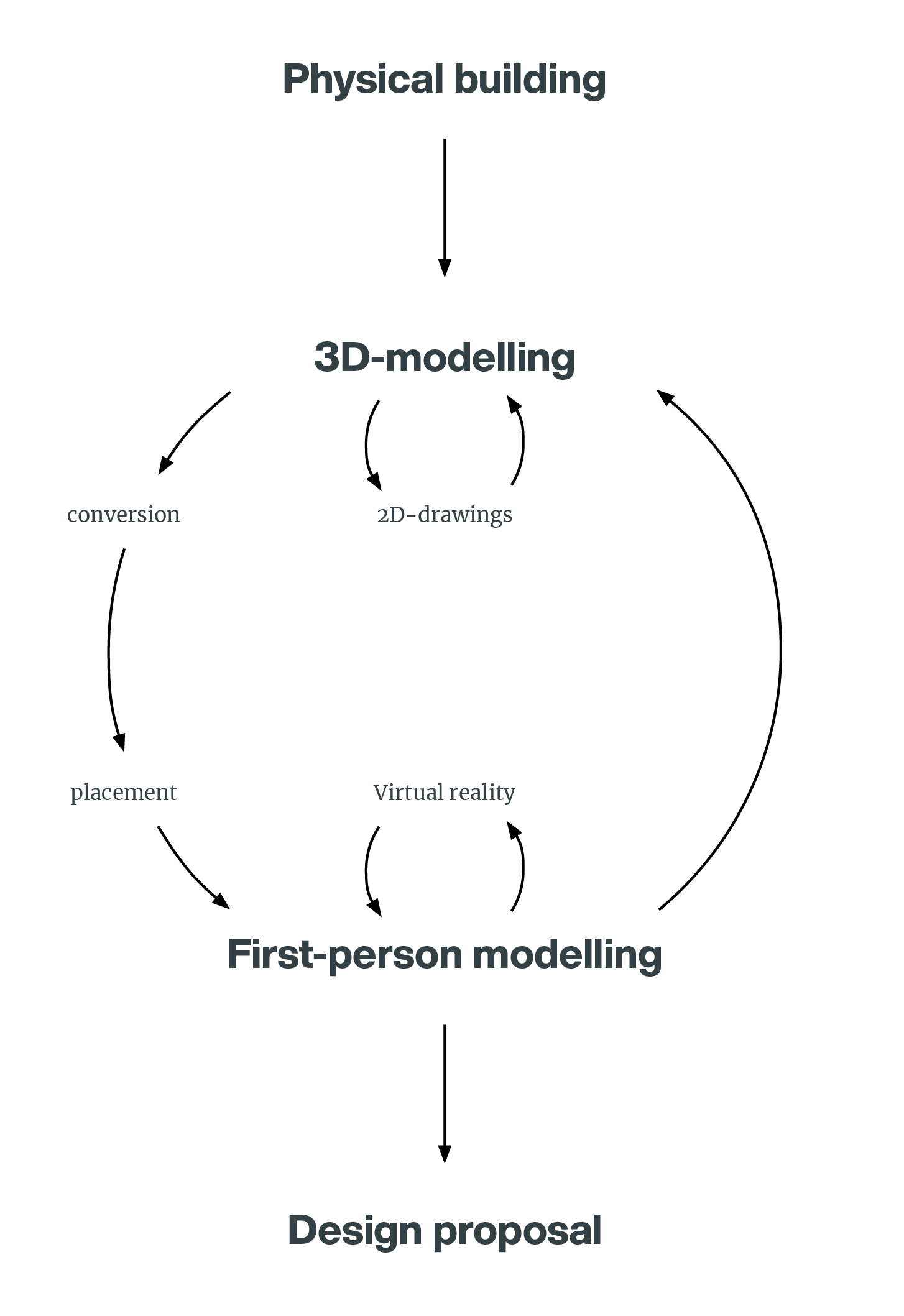Method
The method used for the Pixel Library is unorthodox and playful.
By combining conventional architectural design tools with the gaming world, the project is placed in a loop between the 3D modelling software Rhinoceros 3D and the game Minecraft. By using their different modeling perspectives, Rhinoceros 3D’s overview and Minecraft’s first-person, operations have been executed in the relevant software.
The existing building was imported into the 3D modelling software where the initial design for the virtual was made. The form was then exported to Tinkercad, Autodesk’s online software for 3D printing, where it was converted to a Minecraft schematic-file to be able to be imported into the game. To be places in the game world, it had to be imported with help of an editor, McEdit, where it was be placed on selected coordinates. In Minecraft, the monolith was carved to form spaces of the library in first person perspective in both virtual reality and on a screen. The monolith was then exported back into the 3D modelling software to complete the loop.
Due to the speculative nature of the project, a narrative was used as a tool for both the development of the mixed reality experience but also to validate the design. As the narrative, and later the spaces, are influenced by the fourth industrial revolution historic and contemporary architecture, speculative architecture, and novels of fiction.
The two different parts of the method, the loop and the narrative, has been implemented to create a dialogue of how both the development of design tools and society might occur in the future.
